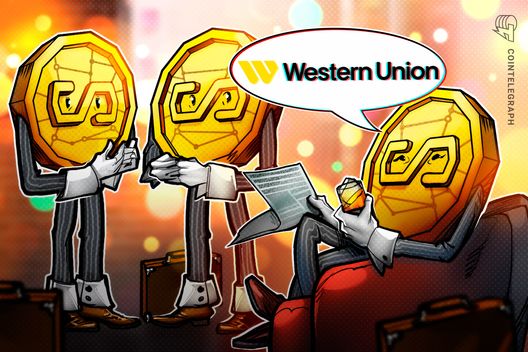In a significant move for the cryptocurrency landscape, Western Union has chosen the Solana blockchain to power its new Digital Asset Network. This collaboration aims to enhance Western Union’s capabilities in digital finance, particularly through the integration of the USDPT stablecoin. The rollout is anticipated to occur in the first half of 2026, marking a bold step into the future of digital transactions.
Western Union’s partnership with Solana highlights the increasing acceptance of blockchain technology among traditional financial institutions.
As Western Union embraces this innovative platform, it signals a growing trend in the financial sector where companies are looking to leverage cryptocurrency’s advantages, including faster transaction speeds and reduced costs. With Solana’s high-performance capabilities, Western Union aims to provide a seamless digital payment experience for its global clientele, potentially reshaping the way cross-border transactions are conducted.
The adoption of stablecoins like USDPT reflects a wider shift towards stable digital currencies in the mainstream economy.
As we look ahead to 2026, this development not only showcases Western Union’s commitment to innovation but also underscores the pivotal role that blockchain technology is expected to play in shaping the future of finance.
Western Union Partners with Solana for Digital Asset Network
Key points regarding this partnership and its potential implications:
- Selection of Solana: Western Union has chosen Solana’s blockchain technology for its Digital Asset Network.
- Introduction of USDPT Stablecoin: The collaboration involves the rollout of USDPT, a new stablecoin designed for digital transactions.
- Expected Launch Timeline: The network and stablecoin are anticipated to launch in the first half of 2026.
- Impact on Digital Transactions:
- Increased efficiency in cross-border transactions.
- Potential to lower transaction costs for consumers and businesses.
- Enhancement of Financial Inclusion:
- May provide access to financial services for underbanked populations.
- Facilitates easier remittance processes globally.
- Innovation in Payment Solutions:
- Introduction of blockchain technology could transform traditional payment frameworks.
- Adoption of digital assets, such as stablecoins, could lead to new financial products and services.
Western Union Partners with Solana: A Game Changer in the Digital Asset Space
In an exciting development for the financial technology landscape, Western Union has chosen Solana to power its upcoming Digital Asset Network, including the introduction of the USDPT stablecoin. This partnership marks a significant shift as traditional financial giants embrace blockchain technology, particularly in the expanding realm of digital currencies.
When compared to other players in the digital financial ecosystem, such as PayPal and Square, Western Union’s decision to integrate Solana, known for its speed and scalability, may offer distinct competitive advantages. Solana’s transaction speed and low fees could enhance user experience, making it a more attractive option for senders and receivers of remittances globally.
However, this move is not without its challenges. Western Union faces stiff competition from decentralized finance (DeFi) platforms that offer peer-to-peer transactions, eliminating the need for intermediaries and potentially lowering costs further. Additionally, concerns surrounding regulatory compliance and market volatility associated with stablecoins could create hurdles for Western Union as it navigates launching this new service.
This initiative could benefit tech-savvy consumers looking for efficient and secure methods for cross-border transactions, particularly those from regions with limited banking infrastructure. Conversely, it could pose problems for traditional banks and financial institutions that may struggle to keep pace with the innovative solutions being offered by blockchain-driven competitors.
As Western Union’s adoption of Solana unfolds, stakeholders from various sectors—including investors, consumers, and financial institutions—will need to stay alert to how this new Digital Asset Network reshapes the landscape of digital finance in the coming years.
















